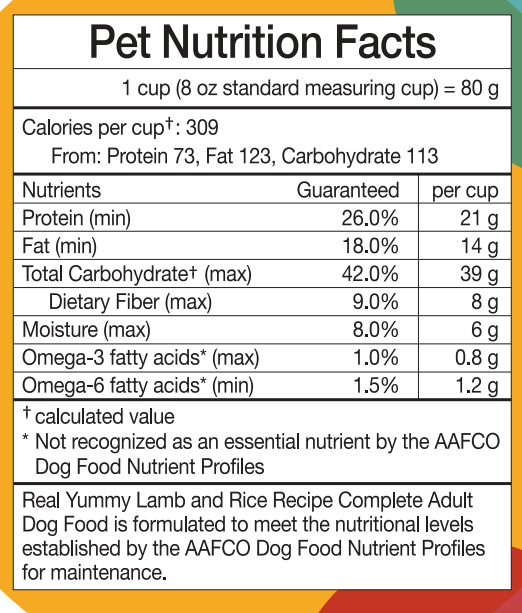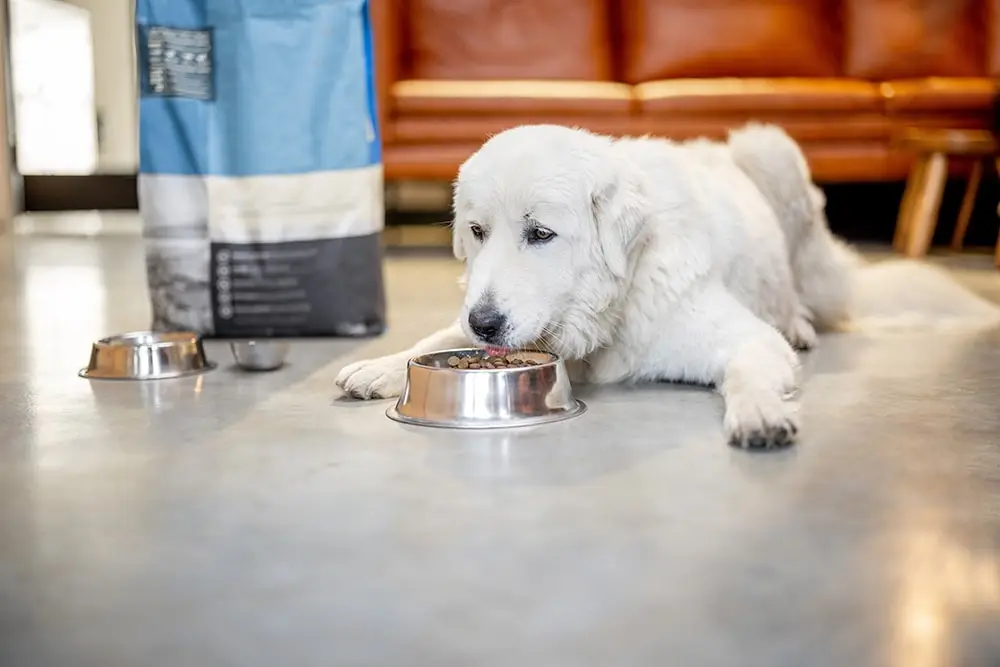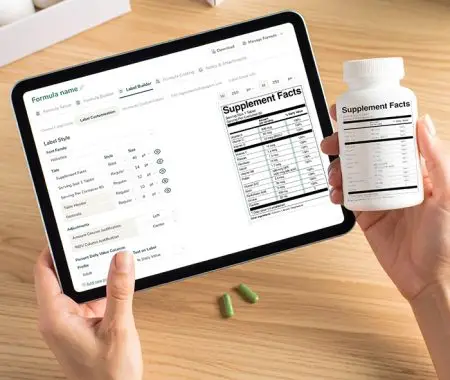Choosing the correct and most nutritious food for your pet is a vital decision and pet owners must be aware of what to look out for when deciding on a food type or brand for their animals. The Food and Drug Administration (FDA) and the Association of American Feed Control Officials (AAFCO) have established strict guidelines for pet food labels to guarantee complete and balanced nutrition.
These requirements help manufacturers communicate essential information about ingredients, feeding guidelines, and nutritional content to pet owners. Understanding and implementing these regulations is about compliance and providing pet owners with the information they need to make safe and informed choices about their pets’ nutrition while maintaining trust in your brand through transparent labeling practices.
Understanding the Basics of Pet Food Labels
A pet food label extends beyond the physical packaging as it encompasses all product-related communications, including websites, brochures, and marketing materials. The FDA and AAFCO regulate these elements to ensure accurate information reaches pet owners while maintaining product safety and quality standards.
The label consists of two main components: the Principal Display Panel (PDP) and the information panel. The PDP, which is the front of the package that consumers see first, must display three crucial elements clearly: the brand and product name, the intended species (e.g. dog or cat), and the net quantity statement. The information panel, typically found on the back or sides, contains detailed nutritional information and feeding guidelines.
These standardized requirements help pet owners make informed decisions about their pets’ nutrition while ensuring manufacturers maintain consistent labeling practices across the industry. The collaborative oversight of the FDA and AAFCO establishes uniform standards that protect both consumers and their pets.
Mandatory Pet Food Label Requirements

Every pet food label must include eight essential components, divided between the Principal Display Panel and the information panel. As stated, the PDP requirements are designed for immediate consumer recognition and include:
- The Brand and Product Name: Must accurately reflect the product’s contents with specific naming conventions based on what ingredient is the most prominent
- Species Identification: Clear indication of whether the animal food product is for dogs, cats, or other pets, usually stated by the name of the animal being included in the title (e.g. Fish Treats for Cats)
- Net Quantity Statement: Accurate measurement in both standard (pounds/ounces) and metric units (grams/kgs)
The remaining five mandatory elements can be found on the information panel or on any other visible position of the package:
- Guaranteed Analysis: Lists minimum percentages of crude protein and fat, and maximum percentages of crude fiber and moisture
- Ingredient List: All ingredients listed in descending order by weight and using their common or usual name
- Nutritional Adequacy Statement: Indicates whether the food provides complete and balanced nutrition for specific life stages
- Feeding Directions: Clear instructions for proper product use, including the amount of food that must be given and how often your pet should be fed
- Manufacturer Information: Complete contact details for the responsible party, including the city, state, and zip code. If the product was made by a third party, you would include the statement “manufactured for:” or “distributed by:”
These requirements ensure transparency in pet food labeling and provide owners with essential information about the product’s nutritional content and proper use. Like labels on human food products, each element serves a specific purpose in helping consumers make more informed decisions about their pets’ nutrition.
Guaranteed Analysis Requirements

The guaranteed analysis section of pet food labels provides crucial nutritional information mainly for dog and cat owners. This standardized format helps pet owners understand the basic nutritional composition of the food and compare different products effectively.
Every pet food label must list at least four essential nutrients in their guaranteed analysis:
- Minimum percentage of crude protein
- Minimum percentage of crude fat
- Maximum percentage of crude fiber
- Maximum percentage of moisture
It’s important to note that the term “crude” refers to the method of measuring the nutrient quantity, and it does not indicate the quality of the ingredients. For example, crude protein indicates the total protein content but doesn’t specify the protein’s digestibility or biological value.
If your product makes any specific marketing claims, additional nutrient guarantees are required. For instance, if a product claims to be “high in calcium,” the guaranteed analysis must include the calcium percentage. These guarantees must follow a specific order and use standardized units to ensure consistency across products.
Ingredient Statement Guidelines
Pet food ingredients must be listed in descending order by weight on an “as-formulated” basis, meaning the weight of ingredients before they go into the product during manufacturing. This label element provides another layer of transparency about what makes up the majority of the pet food.
High-protein animal or plant sources tend to have high moisture content which makes them weigh more, so they should be listed first on an ingredient list. When using terms like “meat” or “poultry,” manufacturers must follow strict AAFCO definitions. For example, the term “meat” can only be used for cattle, pigs, sheep, or goats whereas any other species must be specifically identified (e.g. “venison” or “buffalo”).
All ingredients must use either their AAFCO-defined names or common/usual names to ensure consistency across products. This helps consumers understand exactly what they’re feeding their pets. For instance, “chicken meal” has a specific definition that differs from “chicken” as it refers to a rendered product with most water and fat removed.
Minor ingredients are usually listed toward the end and include minerals, vitamins, artificial colors, flavors, preservatives, and other additives. These must clearly state their purpose in the product. When collective terms are used (such as “animal protein products”), they must also follow specific AAFCO guidelines for ingredient grouping and sub-listing.
For more in-depth definitions of specific ingredients, visit the official AAFCO website.
Nutritional Adequacy Statement Guidelines for Pet Life Stages

The nutritional adequacy statement, typically found on the back or bottom of the package, is a crucial element that tells pet owners whether the food provides complete and balanced nutrition for every stage of their pet’s life. AAFCO has established specific nutrient profiles that must be met for both dogs and cats at different life stages.
For adult dogs in the maintenance life stage, AAFCO guidelines require a minimum protein percentage of 22% and a minimum fat percentage of 5% on a dry matter basis. Adult cats have higher requirements, with a minimum protein percentage of 26% and a minimum fat percentage of 9% on a dry matter basis. These requirements must be reflected in the product’s guaranteed analysis.
Manufacturers can also substantiate any “complete and balanced” nutrient claims using one of two methods:
- AAFCO feeding trials, which involve testing the product on animals under controlled conditions
- Or through laboratory analysis to confirm the product meets AAFCO nutrient profiles
However, the nutritional adequacy statement on the food package must indicate:
- The life stage(s) for which the food is appropriate. The particular life stages accounted for are:
- Growth and reproduction (puppies, kittens, pregnant/nursing animals)
- Adult maintenance
- All life stages
- Senior/mature adult (though not a required AAFCO category)
- Whether adequacy was determined through laboratory analysis or feeding trials
- For growth claims, whether the food is suitable for large-breed puppies
Large-breed puppy formulas require special attention due to their unique growth needs. These products must include specific disclaimers about calcium and phosphorus levels, as excessive amounts can lead to skeletal problems in rapidly growing large-breed puppies. The calcium-to-phosphorus ratio must also be clearly stated and fall within AAFCO’s prescribed ranges.
Products that aren’t intended to be complete and balanced, such as treats or supplements, must clearly state that they are “intended for intermittent or supplemental feeding only”. This helps pet owners understand that these products shouldn’t be used as a sole source of nutrition.
See How FoodLabelMaker Can Help You
Species-Specific Requirements

Pet food labels must identify the intended species on the Principal Display Panel. This requirement extends beyond just cats and dogs to include other pets like reptiles, fish, and rodents, each with their own specific nutritional needs and labeling requirements.
Each species has unique nutritional requirements that must be reflected in both the formula and labeling:
- Cat food must address their unique needs as obligate carnivores, including specific nutrients like taurine and arachidonic acid
- Dog food varies based on size and life stage, with special attention to large-breed puppy formulas
- Specialty pet foods must address the specific nutritional needs of the target species
Therapeutic diets and prescription formulas require additional labeling elements, including:
- Clear statements about its intended use
- Recommendation for veterinary supervision
- Specific feeding instructions and duration of use
Conclusion
Proper pet food labeling is a crucial tool for ensuring pet health and safety while building consumer trust. As a manufacturer, understanding and implementing FDA regulations and AAFCO guidelines is essential for creating compliant, informative labels that effectively communicate your product’s nutritional value and intended use for pet owners.
Regular reviews and updates of pet food labels help manufacturers stay current with evolving regulations and maintain the highest standards of consumer confidence in their products.
The complex interplay of requirements – from guaranteed analysis to nutritional adequacy statements – serves to protect both pets and their owners while maintaining transparency in the pet food industry.
FAQs:
H3: How should I compare dog food labels?
When comparing pet food labels, focus on these key elements:
- Study the guaranteed analysis to compare nutritional content between brands
- Examine the first five ingredients, as they make up the majority of the product
- Check the AAFCO nutritional adequacy statement to ensure the food meets the requirements for your pet’s life stage
- Review feeding guidelines and caloric content to determine optimal serving sizes and value
H3: What’s the difference between “Beef Dog Food” and “Dog Food with Beef”?
The naming of pet food products follows specific rules based on ingredient percentages:
- “Beef Dog Food” requires that beef makes up at least 95% of the total product weight
- “Dog Food with Beef” indicates that beef makes up at least 3% of the product
- “Beef Recipe Dog Food” means beef comprises at least 25% but less than 95% of the product
These rules have been put in place to ensure the ingredients have been transparently displayed on the food label, providing consumers with a complete understanding of the nutritional content of pet food and allowing pet owners to make informed decisions about their pet’s diet.
H3: How are nutrient guarantees calculated and verified?
Nutrient guarantees on pet food labels are determined through rigorous laboratory analysis and must follow specific calculation methods. The analysis includes measurements on both an “as-fed” basis (as the product appears in the package) and a “dry matter” basis (with moisture content removed) to ensure accurate nutrient level reporting. Manufacturers must conduct regular testing to maintain consistent analysis values across different production batches.
This process requires extensive documentation to support all guaranteed nutrient levels, including detailed laboratory reports and quality control records. AAFCO guidelines provide specific protocols for these calculations to ensure consistency across the industry and help manufacturers set appropriate guarantee levels that reflect the true nutritional content of their products.
H3: What information is not typically included on a pet food label?
While pet food labels provide an array of essential information, some details are typically not included. The main ones are:
- Specific nutrient bioavailability data
- Detailed ingredient sourcing information
- GMO status of ingredients
- Precise caloric density calculations
- Ingredient freshness indicators
- Detailed processing methods



